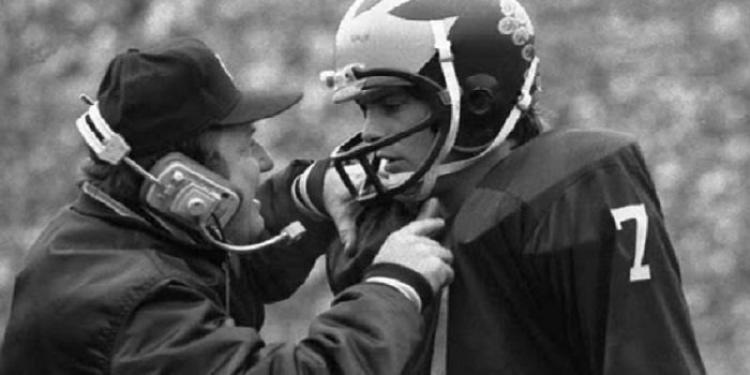The Paid Student Athlete Dilemma (part4)
Posted: July 1, 2015
Updated: October 6, 2017

Is the term “student athlete” accurate or is it a misnomer?
Student athletes, under the conditions of the NCAA, are not subject to payment nor any form of insurance or compensation for injury. They essentially haven’t any benefits other than an education, room and limited board. A student can give themselves physically to a school and if they are injured, may not receive any form of compensation. When high schoolers who make US gambling news by going to the pros are seen as unwise, at least they are given standard employee benefits lawful to workers.
• College athletes lack representation and have little rights
• Walter Byers is the first person to coin the term “student athlete”
• The student athlete term was designed to give the NCAA leverage
Some proponents of anti play-to-pay claim that student athletes should be protected from the trappings of professionalism. Some athletes see their role as almost identical to indentured servitude. Michael Rosenberg of Sports Illustrated asked Myles Brand, President of the NCAA from 2002 to 2009, “why can’t you pay the players?” Brand responded by saying “because their amateurs.” After asking “why are they amateurs?”, Brand said “because we don’t pay them.”
A dishonest days pay for an honest day’s work

Taylor Branch is a civil rights historian and Pulitzer Prize winning author and one of the staunchest critics of the NCAA student athlete policies. He travels the countries declaring college athletes have fundamental rights. “College athletes have the right of representation, the right of due process, above all else what most people take for granted livelihood the right of a free citizen to seek compensation for services that are valuable to them.” In fact, the education that is promised to the athletes isn’t guaranteed.
If a college basketball player is out of class for a month because of March Madness, it’s excusable. In comparison, if the same college basketball player gets good marks, but fails to physically perform up to par, their college future becomes questionable. College athletes are more realistically employees who are told where to go, are given the necessary tools and are transported strictly for the sole purpose of making money.
Walter Byers, an earlier pioneer of the NCAA, created the term “student athlete.”
This action came out of fear because at the time some institutions were considering making student athletes employees of the state which also meant they would be taxed accordingly. In the 1950’s, the families of student’s were starting to sue institutions when players were injured or killed.
In addition, people were trying to seek death benefits and workman’s compensation for athletes since they were working for football programs. Branch said “Byers invented student athletes in order to give the NCAA leverage so they can reap the benefits from the performance of these athletes without having to balance out any obligation to them.” Little did anyone know that Byers would affect everything from college policies to .
The Waldrep case and the test of student athlete legislature

Kent Waldrep was a running back from East Texas who decided to play for Texas Christian University in 1972. Recruiters guaranteed his mother that she would get her son back in better shape. In 1974, TCU played a game against University of Alabama in front of 72,000 people. In a play, the quarterback handed Waldrep the ball and as he turned a corner, the opposing team’s cornerback collided with him. The shoulder to shoulder impact knocked Waldrep out momentarily.
He didn’t make it to the hospital before learning he is neck was broken and he would be paralyzed for the rest of his life. Months later, TCU sent a letter stating that they weren’t liable for any of medical costs. As Waldrep was working ardently through rehabilitation in order to finish his education, TCU cut his scholarship. In response, Waldrep filed a lawsuit against the school in order to be classified as an employee and receive workman’s compensation.
He claimed that his football contract was a contract for work which included benefits like tuition, room and board. TCU used the student athlete defense that Waldrep was a student, who was injured while performing “extracurricular activities.” The court ruled in favor of TCU and Waldrep was left to tend to his own vices, costly medical treatments and court costs. Byers plan proved brilliant in its execution.
In 1940’s NCAA was a powerless union with only on part-time employee who was Byers. Their only actual goals were to sponsor a few major events a year and create a minimal set of rules. Byers wanted to create a centralized organization bringing order. In 1951, members of the University of Kentucky team were caught in a match fixing scandal.
Many colleges were worried that sports betting would run amok in college. Byers convinced all the colleges to get together under the NCAA and boycott playing matches against Kentucky. As a result Byers would be the college sports judge, jury and executioner. Byers would move on to new goal for college sports. That is, television.












